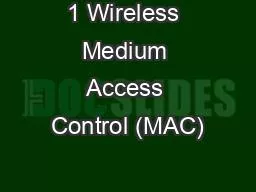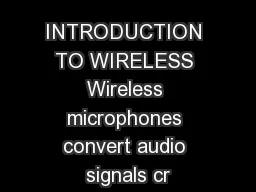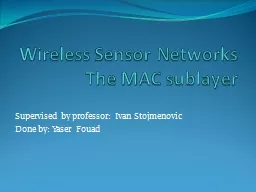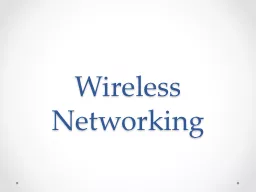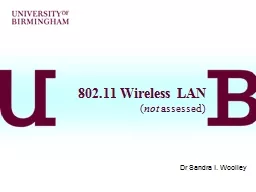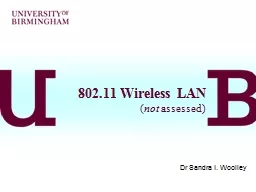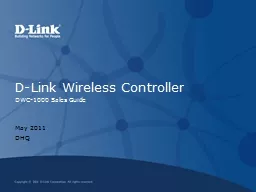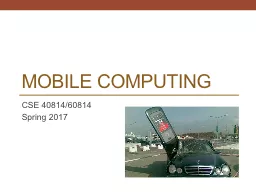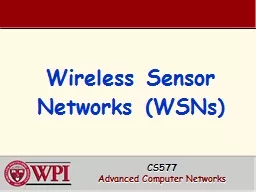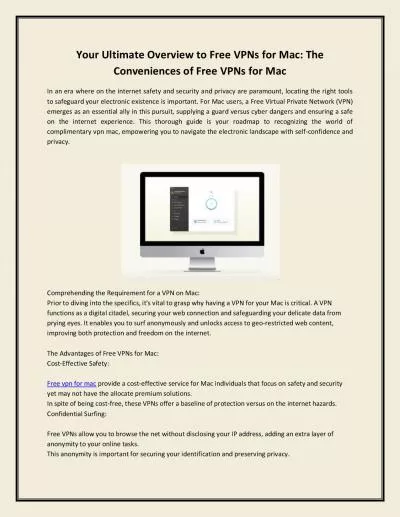PPT-1 Wireless Medium Access Control (MAC)
Author : shoffer | Published Date : 2020-08-27
Romit Roy Choudhury Wireless Networking Lectures University of Illinois at Urbana Champaign 2 Wired Vs Wireless Media Access Both are on shared media Then whats
Presentation Embed Code
Download Presentation
Download Presentation The PPT/PDF document "1 Wireless Medium Access Control (MAC)" is the property of its rightful owner. Permission is granted to download and print the materials on this website for personal, non-commercial use only, and to display it on your personal computer provided you do not modify the materials and that you retain all copyright notices contained in the materials. By downloading content from our website, you accept the terms of this agreement.
1 Wireless Medium Access Control (MAC): Transcript
Download Rules Of Document
"1 Wireless Medium Access Control (MAC)"The content belongs to its owner. You may download and print it for personal use, without modification, and keep all copyright notices. By downloading, you agree to these terms.
Related Documents

